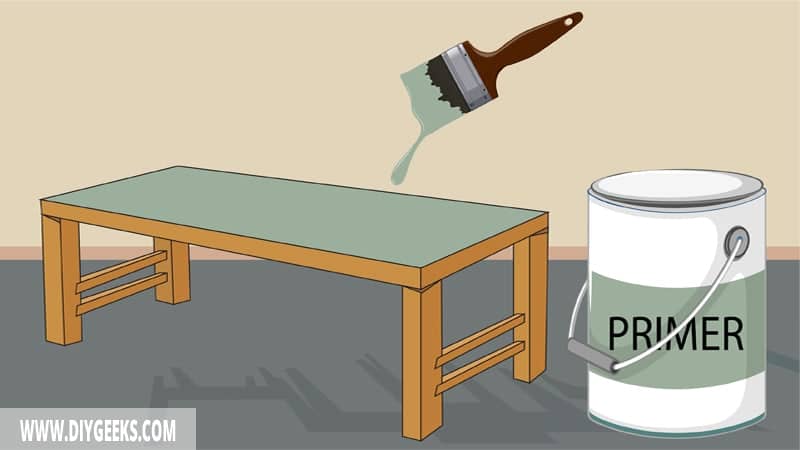You can’t use primer as paint as the primer is designed to be the base coat by adhering to surfaces and covering the imperfections. While the paint is designed to be the topcoat and beautify and protect a surface.
A primer doesn’t have protective additives that make its coating resistant to water or durable. Instead, the primer is formulated with extra adhesion additives, making its coating stick better.
Primer vs. White Paint
Primer is designed to be used as an undercoat — so it has impressive adhesion qualities, no color (some do), and offers no protection. Paint is designed to be over as a top coat and beautify the surface with its colorful finish.
Paint is formulated with resins, pigments, solvents, and some extra additives (depending on the type). Primer is formulated with resins, solvents, lots of additives agents, and no paint pigments (some do) or protective additives.
High-gloss paints have a high amount of sheen in their formula, creating a glossy finish that repels moisture. In addition, some oil-based paints have protective additives that make the paint resistant to water.
Because of the protective additives, paint can be used as a final coat on indoor surfaces. Also, paint has lots of pigments that beautify and change the appearance of a surface. When dry, paint forms a durable coating that can last for years.
On the other hand, primer coating isn’t colorful and doesn’t have a durable finish. Because of its high resins, primer sticks over any surface and is designed to provide a base coat for paints. This means a primer shouldn’t be used as a topcoat or left unpainted.
If applied as a topcoat, the primer will get removed or washed off within 2 weeks. That’s because a primer doesn’t have protective additives that make it durable or resistant to elements.
Can You Apply Primer Without Paint?
You can apply primer without paint temporarily. But, once the primer dries, you must either paint over it or seal it. A bare primer coating will get removed if exposed to water as it isn’t formulated with protective additives.
A primer coating is water-soluble to allow the paint to penetrate and stick it, but if its coating is exposed to liquid (water), it will get washed off.
A bare primer coating without paint or a sealer won’t last more than 2 weeks on a surface and its finish will look dull since it has no paint pigments. Primers have more resins on their formula that allow them to stick to most surfaces easily.
You can use primer without paint if you seal it with a sealer. A sealer, such as polyurethane, will form a glossy layer that will protect it from moisture, water, or scratches. But, the finish will look dull because polyurethane is a clear coat with a transparent finish.
Can You Apply Paint Without Primer?

You can apply paint without a primer, but the surface must be clean and sanded. The purpose of primer is to provide a base coat for paint to stick to. But, a primer coating isn’t needed if the surface is clean, smooth, and porous.
Sanding removes imperfections and creates small ridges (holes) in the surface that the paint can penetrate and stick to.
A primer coating is necessary for slick and non-porous surfaces, such as glass. Paint can’t stick directly to non-porous surfaces while a primer coating can. So, you must apply the primer first, allow it to dry, and then apply the paint.
You must apply a stain-blocking primer if the surface is wet, damaged, or stained to prevent these elements from bleeding through the finish. The stain-blocking primer will act as a “shield’ between the paint and moisture or other elements.
You must apply a primer if you want to change the color shade of the finish. For instance, if you want to change from a dark-colored finish to light colored finish, you need a stain-blocking primer to prevent paint bleed-through.
Related Read: Does Primer Have to Be Even?
[sc name=”primeraspaint”]


